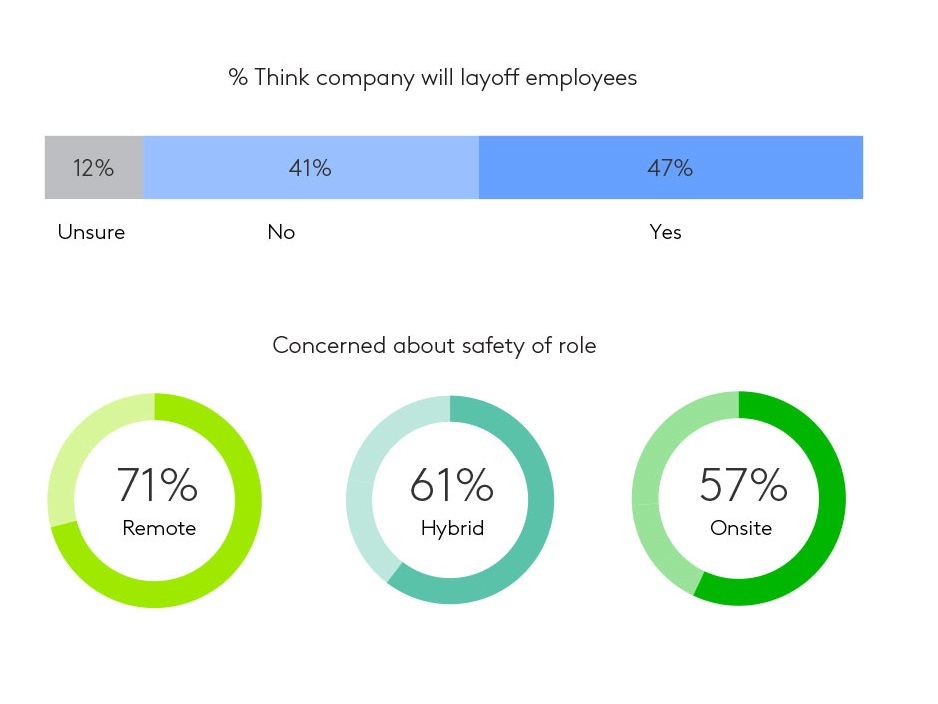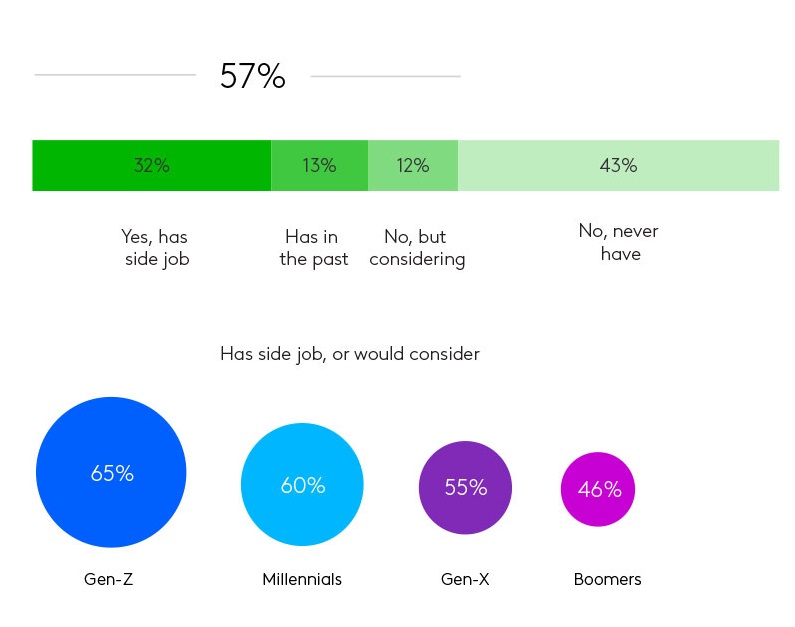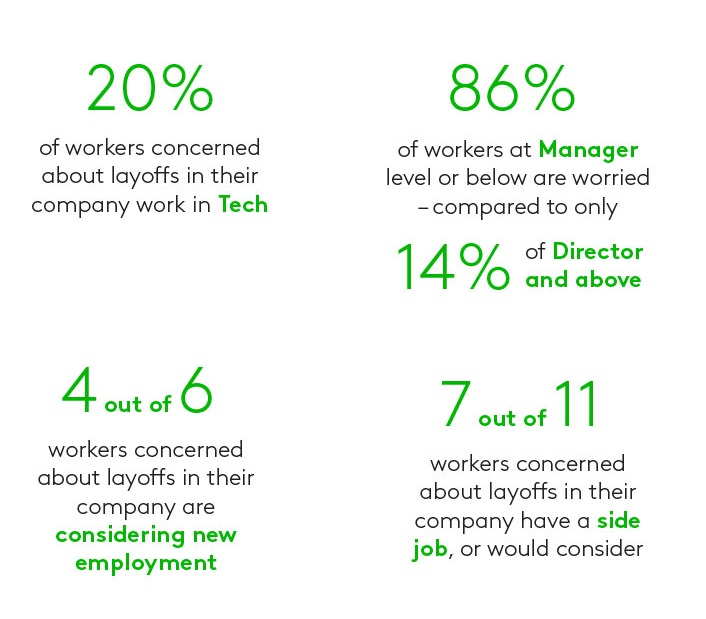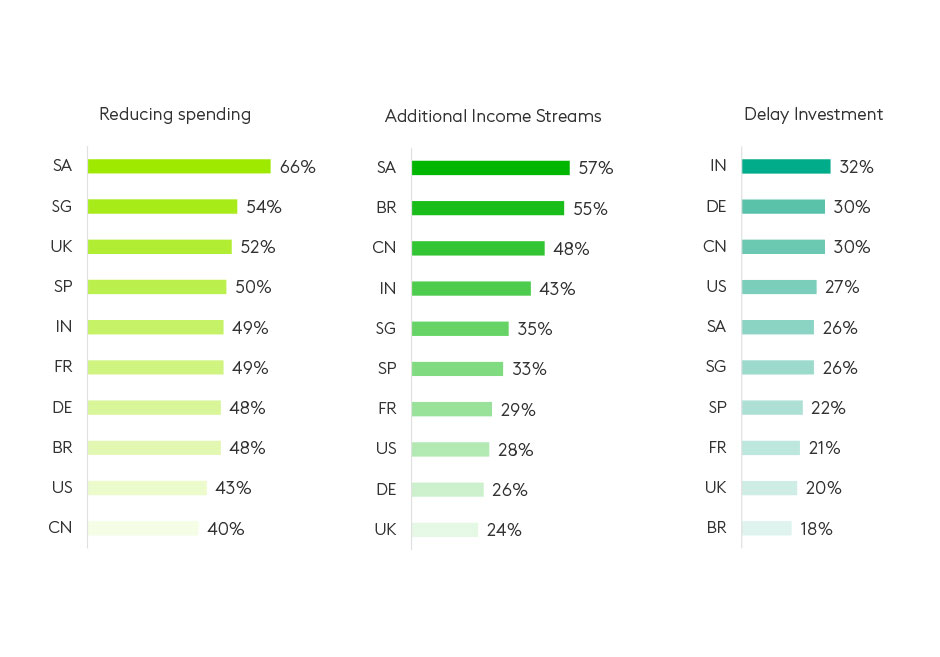Global workers are watching as many corporations struggle in the current economic climate, resulting in layoffs for many. The global workforce has been under considerable strain since 2020 - first acclimating to the expansion of pandemic-fueled remote work, then adjusting back to hybrid or reintroduction of return-to-office plans. As companies, and employees, adjust to modern ways of working, they are also adjusting to the impacts of a squeeze in the global economy.
Kantar conducted research into the feelings, experiences and behaviours of global workers as they traverse an evolving workplace. Read on to learn more about how the workforce is grappling with concerns about their personal job security, and what they’re doing to combat it.
Remote workers and junior staff consider themselves high risk for layoffs
Half of global workers are worried their companies may need to cut costs and lay-off employees. Remote workers, however, are more concerned about their personal job security than those who have returned full-time in-person. Employees who have returned to offices may feel a greater sense of personal connection with supervisors or upper management compared to those who may feel more compelled to prove the value of their work as remote staff.

Age and seniority are also indicators of stress over job safety in a time of economic instability. 69% of Gen-Z are worried about the security of their roles, compared to 51% of Boomers. Additionally, the vast majority - 86% - of workers at a Manager level or below are concerned about layoffs, compared to only 14% of those are Director level or higher.
Side hustles and job hopping more frequent for Gen Z and Millennials
As the global workforce watches large and small companies announce layoffs, they are also taking actions to safeguard their personal financial stability and diversify their income. 7 of 11 (64%) workers who are worried about their company needing to lay-off employees already have a side job or would consider one.
32% already have a “side hustle,” to bring in extra money or meet financial obligations, but younger workers are more apt to pursue it. Gen-Z is roughly 1.5 times more likely than Boomers to at least consider adding a second job to their primary position. As Gen-Z enters the labour force, they are also likely paid less than older professionals and more driven to bring in additional income to meet financial needs or lifestyle desires.

Of those who already have a side job, “making more money” is a top driver - regardless of other demographic factors - and it's often related directly to the current state of the economy. Nearly half (49%) report pursuing side gigs to “bring in more money due to economic uncertainty.”
Global workers are also looking for new roles outside their current company to protect their professional careers. 4 in 6 workers (67%) who are concerned about layoffs at their company are already considering new employment elsewhere.

As the workforce looks ahead, many reduce spending or increase savings
The labour force is also adjusting their spending habits and the ways they make money. 42% of Millennials are pursuing a second income stream while Boomers and Gen-X are more apt to delay an investment or reduce spend. Across generations, workers are more considerate of their spending, or pursuing additional streams of income as threats of more corporate layoffs persist across industries.
Globally, workers in different countries are reacting in varied ways. South Africans are most likely to reduce spending, while workers in India and Germany report “delaying an investment” as result of the current economic climate.

Get more answers
For more findings from this study, access the complete Community Report: Connecting with the Workforce. Read about the generational differences in the global workforce and find additional country-specific answers on sentiments toward new ways of working and more.
About this study
This research was conducted online among 10,055 full or part-time workers (whose job function could be performed remotely at least part-time) across ten global markets: US, UK, France, Germany, India, Singapore, Spain, South Africa, Mainland China and Brazil between December 13, 2022 - January 6, 2023. All interviews were conducted as online self-completion and collected based on controlled quotas evenly distributed between generations and gender by country.
Respondents were sourced from the Kantar Profiles Audience Network.

